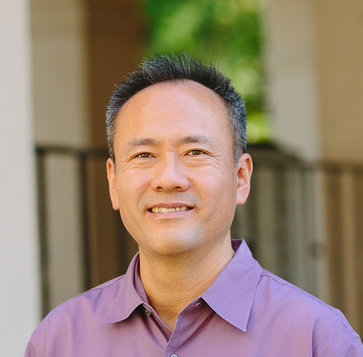Breast Cancer
Connecting Blood and Intratumoral Treg Cell Activity in Predicting Future Relapse in Breast Cancer



Posted October 25, 2019
Peter P. Lee, M.D., Beckman Research Institute, City of Hope

A major challenge in breast cancer is the immune-suppressive microenvironment within primary tumors, which allows tumor cells to evade normal immune surveillance. Regulatory T (Treg) cells modulate the activity of tumor-killing effector immune cells and are implicated in developing an immunosuppressive tumor microenvironment. Treg cells within tumors may come from precursors circulating in the blood (peripheral Treg), which can be classified into three subtypes (I, II, and III) based on their immunologic phenotype. Treg cells are often elevated in patients with breast cancer. However, the relationship between peripheral Treg cells and the immunosuppressive potential of intratumoral Treg cells is not well understood. Supported by a Fiscal Year 2011 Breast Cancer Research Program Era of Hope Scholar Expansion Award, Dr. Peter P. Lee and his team characterized breast cancer patients’ peripheral and intratumoral Treg cells and developed a liquid biopsy-type metric to predict recurrence and monitor disease state based on peripheral Treg cell activity.
Described recently in Nature Immunology, Dr. Lee’s team established that, although breast cancer patients typically have all three subpopulations of peripheral Treg cells, type III (64%) dominates in circulation; nearly all intratumoral Treg cells are type II. The team determined that breast cancer patients’ intratumoral and peripheral Treg type II cells share remarkably similar markers of immunologic activity, suggesting that peripheral Treg II cells are the predominant tumor-infiltrating subpopulation.
Dr. Lee’s team isolated peripheral Treg cell subpopulations from a cohort of breast cancer patients at diagnosis, in order to better understand Treg cell signaling responses to cytokines. They found that Treg type II cells were activated by immunosuppressive (TGF-b and IL-10) but not immunostimulatory (IL-4 and IFN-g) cytokines directly ex vivo. Importantly, a high patient Treg type II response to TGF-b or IL-10 or a low response to IL-4 or IFN-g in patients’ blood at diagnosis indicated a worse recurrence-free survival (RFS) rate. Dr. Lee’s team created a composite cytokine signaling index (CSI), evaluating the balance of peripheral Treg type II cell response to TGF-b/IL-10 and IL-4/IFN-g, and found that approximately 40% of patients with a CSI greater than the median CSI at diagnosis experienced recurrence at 36 months, while no patient with a CSI score below the median had a detectable relapse. The CSI was predictive, independent of tumor stage or subtype, and was found to change with underlying disease state, being significantly higher also in samples from patients at relapse than in remission.
To determine whether CSI may also indicate the immunosuppressive potential of infiltrating Treg cells within tumors, the group established that patient CSI correlates with Treg type II cell immunosuppressive activity in culture. Since Treg cells exert their immunomodulatory effect through contact with other immune cells, Dr. Lee evaluated intratumoral Treg cells within 20mm of immune effector cells, a distance associated with direct interaction, in patients who relapsed and found a significantly higher percentage of intratumoral Treg cells in proximity to tumor-associated macrophages (TAMs), a feature linked to recurrence in breast cancer. Further, the CSI of peripheral Treg type II cells showed a positive association with higher percentages of intratumoral Treg cells interacting with TAMs, and this proximity was linked with a worse RFS in breast cancer patients.
Dr. Lee’s early demonstration of a blood-based indicator for predicting recurrence is an exciting potential tool that is accurate and non-invasive. Additionally, peripheral Treg type II cells may prove to be a viable therapeutic target for primary and recurrent breast cancers, as Dr. Lee has established this population as a major contributor to tumor infiltration and subsequent formation of an immunosuppressive microenvironment.
Publication:
Wang L, Simons DL, Lu X, et al. 2019. Connecting blood and intratumoral Treg cell activity in predicting future relapse in breast cancer. Nature Immunology [Epub ahead of print].
Link:
Public and Technical Abstracts: Integrated Immunotherapy for Breast Cancer
Last updated Wednesday, March 12, 2025














